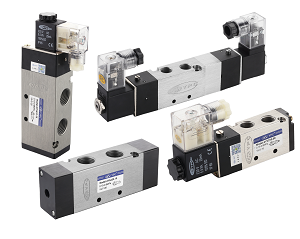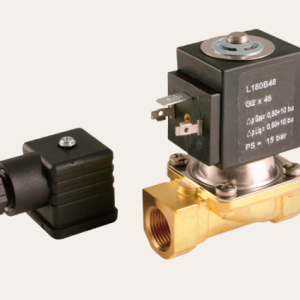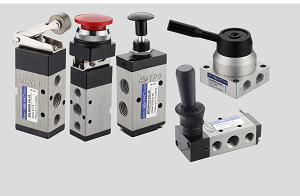WHAT TO KNOW ABOUT PNEUMATIC VALVES?
Valves are crucial to a system since they control the flow of air. They connect the air source (like a compressor) to devices (like valves or cylinders) and manage the air flow.
Many parts control the pressure, speed, and amount of air in a pneumatic system. Pneumatic valves are just one of them. These devices, powered by compressed air, find application in various industrial settings, from engines to tools.
One way to control the flow of air in a pneumatic system is with a pneumatic valve. It controls air and sends it to tubes, lines, or devices in an automated pneumatic system. The valve can be opened or closed using a pneumatic actuator controlled by air, electricity, or by hand. The most important thing to remember is that the pneumatic system controls and moves pressurized air or gas through the valve holes.
THE BASICS OF PNEUMATIC VALVES
Understanding pneumatic valves involves grasping two key aspects: port types and position types.
Port: A port is just a hole in the valve that permits compressed air to flow through it. The number of ports on a valve determines its type. The type of valve affects how it guides and controls airflow in a pneumatic system. There are three main port types:
2-Port Valve (Two-Way Valve):
This valve has one inlet and one outlet port, and it determines whether to permit or block airflow.
3-Port Valve (Three-Way Valve):
Characterized by one inlet and two outlet ports, it guides airflow to one outlet or blocks it altogether.
4-Port Valve (Four-Way Valve):
Typically having two inlet and two outlet ports, it governs the direction of airflow between ports.
Position: A valve’s position denotes its state: open, fully closed, or in a mid-position allowing partial airflow. This position type determines the valve’s level of control over compressed air.
Two main position types are:
2-Position Valve:
This valve has two clear states—fully open or fully closed—managing airflow by allowing or blocking it entirely.
3-Position Valve:
It has three positions: fully open, fully closed, and partially open, giving more control options.
TYPES OF PNEUMATIC VALVES
Understanding pneumatic valves requires recognizing how air connects and routes through the device. The valve’s setup affects the controlled device, so it’s important to choose the right valve for a specific use.
Pneumatic Directional Control Valves:
In any pneumatic circuit, directional control valves are vital in directing or blocking airflow. They manage the speed and sequence of operations in a system.
Pneumatic Solenoid Valves:
Widely used in manufacturing, solenoid valves regulate airflow in pneumatic systems and liquid flow in hydraulic systems. There are two types based on the initial spool position:
- Normally-Closed Valve: Initially closed, it opens when a signal is given.
Normally-Open Valve: Initially open, it closes when a signal is given.
Mechanical Valves:
People operate mechanical valves manually in situations where using electricity is unsafe or impractical. They are hand-operated for specific tasks.
Air Operated Valves:
Similar to solenoids in design, air-operated valves respond to air pressure instead of an electric signal. These devices utilize power on a piston or diaphragm. They are particularly suitable for high-output locations where electricity is not required. They are commonly used from a distance.
BROAD RANGE OF PNEUMATIC VALVES BY SS HUSSAIN
SS Hussain and Sons play a pivotal role in the Pakistani market, contributing significantly by offering a diverse array of pneumatic valves. Specializing in various types, the company provides essential components like directional control valves, fluid control valves, and mechanical valves.



